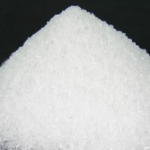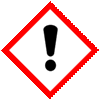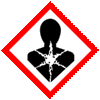 |
King of Chemicals Manufacturers |
Specifications, Properties, Uses, SDS of BHA Butylated Hydroxyanisole EP USP NF BP Ph Eur FCC Food Grade Manufacturer Supplier Exporter Wholesale & Small Packs, CAS Number 25013-16-5. |
|
| King of Chemicals has several associated companies having accreditations like cGMP, GLP - FDA Approved Good Manufacturing Practice and Good Laboratory Practice of WHO standard, ISO-9001, ISO-14001, ISO/IEC 17025, ISO ISO-45000, HACCP, FSSC 220000, FSSAI, "REACH" Registered, Kosher & Halal Certified. e-CTD and DMF support can be made available if needed. We offer USP NF BP Ph Eur EP IP JP Analytical Reagent FCC Food Grade Chemicals & Nutraceuticals. | |
        |
|
Muby Chem Pvt. Ltd. is a several decades old group of companies, engaged in manufacturing, supplying, distributing, wholesale supplies of BHA Butylated Hydroxyanisole for actual users, including retail or small pack supplies for research and development work.
We supply fine and speciality chemicals, pharmaceutical excipients, mineral fortifiers in chemically pure, analytical reagent grade, IP BP USP Ph Eur EP JP and other pharmaceutical grade monograph including FCC Food grade chemicals and Nutraceuticals at best prices. We and/or our associated units have all the facilities to supply as per cGMP standard observing good manufacturing practice and good laboratory practice. We can assure low microbial count and also offer a test certificate for the same. We maintain warehouses across USA, India, and UAE. Our group exports to USA, Canada, Mexico, Argentina, Brazil, Chile, Korea, Malaysia, Thailand, Indonesia, Europe, and several other parts of the world. We supply in wholesale container loads to small pack of few grams. Solid products may be specified for it size and shape as desired by the buyer.









BHA Butylated Hydroxyanisole CAS Number 25013-16-5
For Properties Specifications Uses of BHA Butylated Hydroxyanisole Click Properties, Specifications, Uses, Price, Process of BHA Butylated Hydroxyanisole Manufacturer.
For For SDS MSDS Sheet of Butylated Hydroxyanisole Click SDS Safety Data Sheet MSDS Sheet of BHA Butylated Hydroxyanisole Manufacturer.
The Properties, Specifications, Monograph and Uses of BHA Butylated Hydroxyanisole:
CAS Number 25013-16-5, EINECS EC Number 246-563-8, HS Code 29095090 or 29093090 or 29071990, Molecular Weight 180.25, Molecular Formula (CH3)3CC6H3(OCH3)OH, FEMA 2183
Butylated hydroxyanisole or BHA is an antioxidant consisting of a mixture of two isomeric organic compounds, 2-tert-butyl-4-hydroxyanisole and 3-tert-butyl-4-hydroxyanisole. It is prepared from 4-methoxyphenol and isobutylene. It is a waxy solid used as a food additive with the E number E320. The primary use for BHA is as an antioxidant and preservative in food, food packaging, animal feed, cosmetics, rubber, and petroleum products. BHA also is commonly used in medicines. BHA gives greater synergistic effect with TBHQ, BHT and propyl gallate than that which might be expected from contribution of each individual antioxidant.
Specifications of Butylated Hydroxyanisole USP NF Grade
C11H16O2 --- 180.24
Phenol, (1,1-dimethylethyl)-4-methoxy-.
tert-Butyl-4-methoxyphenol [CAS 25013-16-5].
Butylated Hydroxyanisole contains not less than 98.5 percent of C11H16O2.
Identification: To 5 mL of a 1 in 10,000 solution in 72% alcohol add 2 mL of sodium borate solution (1 in 50) and 1 mL of a 1 in 10,000 solution of 2,6-dichloroquinone-chlorimide in dehydrated alcohol, and mix: a blue color is produced.
Residue on ignition: not more than 0.01%, determined on a 10-g specimen.
Heavy metals: 0.001%.
Organic volatile impurities: meets the requirements.
BHA Butylated Hydroxyanisole FCC Food Grade
C11H16O2 Formula weight 180.25
INS: 320 CAS: 25013-16-5
DESCRIPTION
BHA occurs as a white or slightly yellow, waxy solid. It is predominantly 3-tert-butyl-4-hydroxyanisole (3-BHA), with varying amounts of 2-tert-butyl-4-hydroxyanisole (2-BHA). It melts between 48C and 63C. It is freely soluble in alcohol and in propylene glycol, and insoluble in water.
Function: Antioxidant.
Identification: Add 2 mL of sodium borate TS and 1 mL of a 1:10,000 solution of 2,6-dichloroquinonechlorimide:absolute alcohol to 5 mL of a 1:10,000 solution of sample in 72% alcohol, and mix. A blue color appears.
Assay: Not less than 98.5% of C11H16O2.
Residue on Ignition: Not more than 0.05%.
Specifications of Butylated Hydroxyanisole BP Ph Eur Grade
Butylhydroxyanisole Ph Eur
C11H16O2 --- 180.3 --- 25013-16-5
Action and use: Antioxidant.
DEFINITION
Butylhydroxyanisole is 2-(1,1-dimethylethyl)-4-methoxyphenol containing not more than 10 per cent of 3-(1,1-dimethylethyl)-4-methoxyphenol.
CHARACTERS
A white, yellowish or slightly pinkish, crystalline powder, practically insoluble in water, very soluble in methylene chloride, freely soluble in alcohol and in fatty oils. It dissolves in dilute solutions of alkali hydroxides.
IDENTIFICATION
A. Examine the chromatograms obtained in the test for related substances. The principal spot in the chromatogram obtained with test solution (b) is similar in position, colour and size to the principal spot in the chromatogram obtained with reference solution (a).
B. To 0.5 ml of solution S (see Tests) add 10 ml of aminopyrazolone solution and 1 ml of potassium ferricyanide solution. Mix and add 10 ml of methylene chloride. Shake vigorously. After separation, the organic layer is red.
C. Dissolve about 10 mg in 2 ml of alcohol. Add 1 ml of a 1 g/l solution of testosterone propionate in alcohol and 2 ml of dilute sodium hydroxide solution. Heat in a waterbath at 80C for 10 min and allow to cool. A red colour develops.
TESTS
Solution S: Dissolve 2.5 g in alcohol R and dilute to 25 ml with the same solvent.
Appearance of solution: Solution S is clear and not more intensely coloured than intensity 5 of the range of reference solutions of the most appropriate.
Related substances: To pass the test --- (0.5 per cent).
Heavy metals: 1.0 g complies with limit test C for heavy metals (10 ppm). Prepare the standard using 1 ml of lead standard solution (10 ppm Pb).
Sulphated ash: Not more than 0.1 per cent, determined on 1.0 g.
BHA Butylated Hydroxyanisole is also offered as per EP grade monpgraph.
The MSDS-SDS Hazard Statement of BHA Butylated Hydroxyanisole:
BHA Butylated Hydroxyanisole SDS GHS, Safety Data Sheet
MSDS, Material Safety Data Sheet 25-Jun-21
1. Product Identification
Product Name & Other Names: BHA or Butylated Hydroxyanisole or "tert-butyl-4-methoxyphenol (2-and 3-mixture)" or tert-butyl-p-methoxyphenol or "t-butyl hydroxyanisole" or mono-tert-butyl-4-hydroxyanisole.
CAS No.: 25013-16-5
EINECS EC Number: 246-563-8
Molecular Weight: 180.25
Chemical Formula: C11H16O2
Relevant uses and uses advised against (if any): Laboratory and Industrial use only.
Supplier: As per letterhead.
2. Hazards Identification
GHS, Globally Harmonized System Classification in accordance with 29 CFR 1910
Classification according to Regulation (EC) No 1272/2008
Acute toxicity, oral (Category 4), H302
Skin irritation (Category 2), H315
Eye irritation (Category 2A), H319
Carcinogenicity (Category 2), H351
Specific target organ toxicity - single exposure (Category 3), Respiratory system, H335
Labeling according to GHS & Regulation (EC) No 1272/2008
GHS Label Elements  Irritant |
GHS Label Elements |
Signal Words: Warning
Hazard statements:
H302: Harmful if swallowed.
H315: Causes Skin Irritation.
H319: Causes serious eye irritation.
H335: May cause respiratory irritation
H351: Suspected of causing cancer.
Precautionary statements:
P202: Do not handle until all safety precautions have been read and understood.
P260: Do not breathe dust/fume/gas/mist/vapors/spray.
P264: Wash thoroughly after handling.
P270: Do not eat, drink or smoke when using this product.
P273: Avoid release to the environment.
P280: Wear protective gloves/protective clothing/eye protection/face protection.
P281: Use personal protective equipment as required.
P314: Get medical advice/attention if you feel unwell.
P330: Rinse mouth.
P301+P312: IF SWALLOWED: Call a POISON CENTER or doctor/ physician if you feel unwell.
P302+P352: IF ON SKIN: Wash with plenty of soap and water.
P305+P351+P338: IF IN EYES: Rinse cautiously with water for several minutes. Remove contact lenses, if present and easy to do. Continue rinsing.
P308+313: IF exposed or concerned: Get medical advice/attention.
P362: Take off contaminated clothing and wash before reuse.
P332+P313: If skin irritation occurs: Get medical advice/attention.
P405: Store locked up.
P501: Dispose of contents/container in accordance with local/regional/national/international regulation.
3. Composition/Information on Ingredients
Product Name & Other Names: BHA or Butylated Hydroxyanisole or "tert-butyl-4-methoxyphenol (2-and 3-mixture)" or tert-butyl-p-methoxyphenol or "t-butyl hydroxyanisole" or mono-tert-butyl-4-hydroxyanisole.
CAS No.: 25013-16-5
EINECS EC Number: 246-563-8
4. First Aid Measures
Always seek medical attention after first aid measures are provided.
Inhalation: Remove to fresh air. If not breathing, give artificial respiration. If breathing is difficult, give oxygen. Get medical attention.
Ingestion: Never give anything by mouth to an unconscious person. Get medical attention.
Skin Contact: Wipe off excess material from skin then immediately flush skin with plenty of water for at least 15 minutes. Remove contaminated clothing and shoes. Get medical attention. Wash clothing before reuse. Thoroughly clean shoes before reuse.
Eye Contact: Immediately flush eyes with plenty of water for at least 15 minutes, lifting lower and upper eyelids occasionally. Get medical attention immediately.
5. Fire Fighting Measures
Flammability of the Product: May be combustible at high temperature.
Flash Points: 156C.
Products of Combustion: Carbon dioxide, Carbon monoxide, fumes.
Fire: Flammable in the presence of open flame.
Explosion: Slightly explosive in presence of heat.
Fire Extinguishing Media: Use any means suitable for extinguishing surrounding fire. Use water spray, alcohol-resistant foam, dry chemical, or carbon dioxide.
Extinguishing Media Not recommended: Avoid using solid water jet as it may scatter the fire.
Special Information: In the event of a fire, wear full protective clothing and NIOSH-approved self-contained breathing apparatus with full face piece operated in the pressure demand or other positive pressure mode. At high temperatures or when moistened under fire conditions, it may produce toxic or irritating fumes. Containers may explode on heating. Fire-extinguishing work is done from the windward and the suitable fire-extinguishing method according to the surrounding situation is used. Uninvolved persons should evacuate to a safe place.
6. Accidental Release Measures
Personal precautions, protective equipment, and emergency procedures: Ventilate area of leak or spill. Avoid breathing dust/fumes/gas/mist/vapors/spray. Use individual protective equipment (waterproof boots, suitable protective clothing, safety glasses, etc.). Restrict unprotected personnel from the area. Prevent any contact with hot surfaces. Do not approach facing the wind. Do not touch the spilled material.
Environmental precautions: Do not let the product enter drains, soil, or water sources.
Methods and materials used for containment cleanup procedures and Storage:
Small Spill: Avoid dust formation. Avoid breathing dust. Ensure adequate ventilation. Use appropriate tools to put the spilled solid in a convenient waste disposal container. Finish cleaning by spreading water on the contaminated surface and dispose of according to local and regional authority requirements.
Large Spill: Avoid touching the spilled material. Contain spilled material. Cover with an inert, non-combustible absorbent material, (e.g., sand, earth, diatomaceous earth, vermiculite). Vacuum or sweep-up and remove to an approved disposal container.
7. Handling and Storage
Precautions for safe handling: Apply according to good manufacturing and industrial hygiene practices. Ensure proper ventilation. In case of insufficient ventilation, wear suitable respiratory equipment. Wash thoroughly after handling. Do not drink, eat, or smoke while handling. Avoid contact with skin, eyes, and clothing. Minimize dust generation. Avoid breathing dust/fumes/gas/mist/vapors/spray. Avoid contact with eyes, skin, and clothing. Keep container tightly closed. Avoid ingestion and inhalation. Use individual protective equipment (waterproof boots, suitable protective clothing, safety glasses, etc.). Prevent any contact with hot surfaces.
Conditions for safe storage, including any incompatibilities: Store in cool, dry, and ventilated area away from heat sources and protected from sunlight in tightly closed original container. Keep air contact to a minimum. Store protected from heat, sparks and ignition sources and incompatible materials. Avoid contact with skin and eyes. Avoid inhalation of dust/mist/vapor. Do not store with incompatible materials like strong oxidizing agents, reducing agents, metals, and acids.
8. Exposure Controls/Personal Protection
Airborne Exposure Limits: Not established.
Ventilation System: A system of local and/or general exhaust is recommended to keep employee exposures as low as possible. Local exhaust ventilation is generally preferred because it can control the emissions of the contaminant at its source, preventing dispersion of it into the general work area.
Personal Respirators (NIOSH Approved): For conditions of use where exposure to dust or mist is apparent and engineering controls are not feasible, a particulate respirator may be worn. For emergencies or instances where the exposure levels are not known, use a full-face positive-pressure, air-supplied respirator.
Skin Protection: Wear protective gloves and clean body-covering clothing.
Eye Protection: Use chemical safety goggles and/or full-face shield where dusting or splashing of solutions is possible. Maintain eye wash fountain and quick-drench facilities in work area.
Other Control Measures: Maintain good housekeeping in work area. Handle in accordance with good industrial hygiene and safety practice. Wash hands after handling.
9. Physical and Chemical Properties
Appearance: White to off-white waxy solid.
Odor: It has faint typical odor.
Odor threshold: Not available.
pH: Not available.
Relative density: around 1.05
Boiling Point: 264-270C.
Melting Point: 48 - 55C.
Flash point: Not available.
Auto-ignition temperature: Not available.
Decomposition temperature: Not available.
Upper/lower flammability or explosive limits: Not available.
Vapor pressure: Not available.
Vapor density: Not available.
Evaporation rate: Not available.
Flammability (solid, gas): Not available.
Partition coefficient: n-octanol/water: Not available.
Solubility: It is soluble in water.
Viscosity: Not available.
Molecular Weight: 180.2
Molecular Formula: C11H16O2
10. Stability and Reactivity
Stability: Stable under ordinary conditions of use and storage.
Hazardous Decomposition Products: It emits Carbon dioxide, Carbon monoxide & Fumes.
Hazardous Polymerization: Will not occur.
Incompatibilities: Strong oxidizing agents, reducing agents metals and acids.
Conditions to Avoid: Incompatibles and moisture.
Phenols are incompatible with strong reducing substances such as hydrides, nitrides, alkali metals, and sulfides.
Avoid use of aluminum, copper and brass alloys in storage and process equipment.
Heat is generated by the acid-base reaction between phenols and bases.
Phenols are sulfonated very readily (for example, by concentrated sulfuric acid at room temperature), these reactions generate heat.
Phenols are nitrated very rapidly, even by dilute nitric acid.
Nitrated phenols often explode when heated. Many of them form metal salts that tend toward detonation by rather mild shock.
Segregate from oleum, nitric acid and chlorosulfonic acid.
11. Toxicological Information
Toxicity data
ORL-RAT LD50 > 2000 mg kg-1
ORL-MAM LD50 1100 mg kg-1
Carcinogenic Effects: Classified 2B (Possible for human.) by IARC. Classified 2 (Some evidence.) by NTP.
Mutagenic Effects: Mutagenic for bacteria and/or yeast. May cause damage to the following organs: blood, liver, upper respiratory tract, skin.
Teratogenic Effects: Teratogenic effects have occurred in experimental animals.
Developmental Toxicity: Adverse reproductive effects have occurred in experimental animals.
May affect genetic material (mutagenic). May cause adverse reproductive effects based on animal test data. May cause cancer.
12. Ecological Information
Toxicity data: Not available.
Products of Biodegradation: Possibly hazardous short-term degradation products are not likely. However, long term degradation products may arise.
Results of PBT and vPvB assessment: This substance/mixture contains no components considered to be either persistent, bioaccumulative and toxic (PBT), or very persistent and very bioaccumulative (vPvB) at levels of 0.1% or higher.
13. Disposal Considerations
Whatever cannot be saved for recovery or recycling should be managed in an appropriate and approved waste disposal facility. Processing use or contamination of this product may change the waste management options. State and local disposal regulations may differ from federal disposal regulations. Dispose of container and unused contents in accordance with law.
14. Transport Information
Land Transport USA DOT, ADR/RID Europe & Canada TDG: Not Regulated.
Air Transport IATA/ICAO: Not Regulated.
Sea Transport ICAO/IATA: Not Regulated.
15. Regulatory Information
USA:
SARA 311/312 Hazards: Immediate & Delayed Health Hazard. See section 2.
Section 16 - Additional Information
DISCLAIMER: The information and recommendations set forth herein are presented in good faith and believed correct as of the date hereof. It is compiled from various sources, and it is not necessarily all inclusive nor fully adequate in every circumstance. In addition, these suggestions should not be confused with nor followed in violation of applicable laws, regulations, rules, or insurance requirements applicable. This SDS MSDS sheet is intended only as a guide to the appropriate precautionary handling of the material by a professionally trained person using this product. Individuals receiving the information must exercise their independent judgment in determining its appropriateness for a particular purpose. This shall not constitute a guarantee for any specific product features and shall not establish a legally valid contractual relationship. In no case shall our company be liable to loss or damages by the product user.

BHA Butylated Hydroxyanisole Manufacturers, Suppliers, Exporters, Wholesellers:
King of Chemicals manufacturers

Plot No. 2900/46&47 + 2900/163to167, GIDC, Ankleshwar, Dist. Bharuch, India
India, USA, UAE
TEL: (Office) 91-22-23774610, 91-22-23723564
email: info@kingofchemicals.com
Copyright and Usual Disclaimer is Applicable --- March 21, 2025
If I give you “My Word” Nobody can undo it.
If I sign an “Agreement” my Lawyer will undo it
Our products are for industrial and laboratory use only. The user must test the material before use. We are not dispensing chemists or druggist and do not offer over the counter type (OTC) products for medical use by individuals.
We and our associates manufacture pure chemicals surpassing Monograph Specifications of Analytical Reagent Standards, British & European Pharmacopoeia BP Ph Eur EP Standard, US Pharmacopoeia USP NF Standard, Indian Pharmacopoeia IP Standard, Japan Pharmacopoeia JP Standard, FCC Food Grade Standard. |
|
